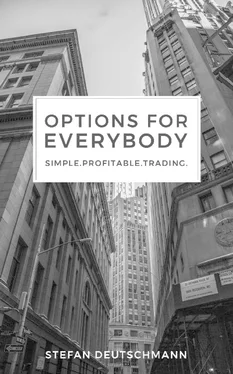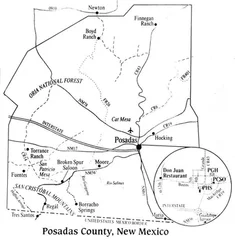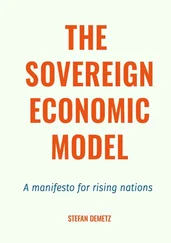Let's just have some roulette. Basically a roulette wheel has 36 numbered fields, black and red and probably you have heard in movies "I will go to Vegas and bet everything on red". Most of these roulette tables have either one, two or sometimes three green squares and either a zero, double zero or even triple zero. Have you ever noticed them? Basically, when you go into a casino, these numbers, these double zeros, triple zeros, and all that stuff tend to be in favor of the casino. If you bet on a color, the probability of winning is 1:1, so if you bet 10 USD, you can win 10 USD. Banally speaking, you win 100%. So you first assume that you have a 50% chance of winning, right? The reality is that in most casinos, especially American ones, the probability of hitting black or red every time is only 46.37%. This is due to the additional green areas on the roulette table.
Another question to ask yourself in this context is: Why do casinos have table limits? They have table limits because they increase the number of games a person will play, which increases the house advantage of the casino. Look, the longer you play, the more you can lose. Casinos deliberately set table limits to control how often someone plays a game. The reason they do this is because they don't want you to come around the corner and bet, for example, directly 1 million USD on black or red. The risk would be much too high for the casino in this case. But if you would come for years and bet only 10 USD per game each time, then they would accept this bet in any case, because the statistics clearly play against you here.
Or let's take insurance companys. Imagine you have car insurance for which you pay premiums year after year. How often have you actually used it and how much have you paid in? Insurance companies also work according to the principle of probability, calculate their risk and let you pay a corresponding premium. The statistics are also on the side of the other party.
Why would you care about all this? What would it be like if you could also be the "bank" on the capital markets and exceptionally the probability theory could be used in your favour? Exciting, isn't it? Let's go on this journey together, everything will be explained to you if you are patient and eager to learn.
Remember:
The most reliable and consistent profits are achieved on the basis of probability and statistics.
You can use these for yourself without being a genius á la Beautiful Mind or having studied math.
First of all, I would like to talk about the absolute basics of option trading. You are probably an absolute beginner or have never heard that options can be traded and what they actually are. It is therefore important that we first understand what constitutes an option or an option contract at all.
Why and for what purpose were options invented? In essence, they are intended to perform "administrative tasks", namely to minimise risk. This gives you the opportunity to hedge yourself, speculate or use the contracts as a form of insurance. For options trading, it is important that we clearly define and understand the benefits and risks of each position we take. So, what is an options contract? Options are simply a legally binding contractual agreement between a buyer and a seller to buy and sell shares at a fixed price over a period of time. This is the serious difference between options and shares in general. Trading at a fixed price and for a fixed period is agreed.
Essentially, there are two types of options, puts and calls. Call options give the holder of the option the right, not the obligation, to buy a stock at a certain time at a certain price. Once again, it gives the owner the right, but not the obligation, that is, if I own a call option, I have the choice, or one would also say "the option", to buy that stock at a certain price over a certain period of time. Understandable, isn't it? It's a little different with put options.
This gives the put holder the right, but not the obligation, to sell shares at a certain price at a certain time. I can enter into a new sale agreement and have the choice to sell shares at a certain price if it reaches or does not reach or breaks through that price and have the choice to enter into the contract with the person from whom I bought the put.
Imagine coupons, it gets less complicated. Suppose we had a cheeseburger voucher for 1 USD. This is the exercise price we already have of 1 USD. The burger shop and I have determined with this coupon that they will sell me a cheeseburger for 1 USD. Until when is this contract valid? This is the expiration date, let's say it's April. Consequently, we know that we can execute this agreement until April to receive the goods for the price mentioned. So this is a call option. If, for whatever reason, on the day I want to redeem this voucher, cheeseburgers cost 5 USD once, then thanks to the voucher, I can still buy the burger for 1 USD. In this case I would exercise my option to pay only 1 USD.
Now let's take a look at the other side. I don't have to redeem options if I bought them, but in this case it's an advantage for me. But let's take the other side of the example and let's assume that on that day I go to the Diner and cheeseburgers cost just 0.50 USD. In this case I wouldn't redeem the voucher because I wouldn't take advantage of it. In this case I would still have a call option on cheeseburgers, but I will not exercise this option as it is not in my interest. Why should I pay more than I have to? Just transfer this example to stocks like Apple or Amazon or whatever you have in mind. The exercise price, the expiration date and the way the logic works are the same for everything you would put in this place.
Once again, very briefly - it is really important that you internalize these basics. With a call option, you buy the stock at a later date at a fixed price (if you want to). It has an expiry date. So it's like a voucher you buy yourself. This concerns the calls. With put options, you sell shares at a later date at a fixed price. So it is exactly the same - only the other way around.
For newcomers, understanding these contractual relationships is really complicated at first, but once you get involved and the node is broken, option contracts are very easy to understand. Don't worry, we'll go into each component so many times throughout this book that it will become flesh and blood for you. You will see, the world of options is not rocket science.
Remember:
Options are a legally binding contractual agreements between a buyer and a seller to buy and sell shares at a fixed price over a specified period of time.
You can either buy or sell options.
As a buyer, you acquire rights; as a seller, you acquire obligations.
Now let's talk about the differences between stock trading and options trading. However, one thing must be clear from the outset. In no way am I going to try to denunciate stock trading here. This type of investment has its raison d'être and I also hold various stocks for various reasons. So there is no reason to demonise stocks. Nevertheless, I am of the opinion that trading options - bad wordplay - offers more options, more opportunities and less risk than trading stocks. However, this statement is only partially correct. Many will now argue with the danger arising from the leverage effect. Let's look at the whole thing together and then you can form your own opinion.
With options we have the possibility to use the leverage to our advantage - but it still holds a certain danger. The leverage effect can work for and against us, but if you are able to understand the mechanics behind it, levers are a great tool - not just in crafts. However, one of the most important advantages of option trading is exactly that - in leverage - because you can use it to increase your return and reduce your risk at the same time. Nevertheless, caution is advised. A hasty action transforms these advantages into disadvantages. However, we will discuss all this in detail. Another advantage of options over stocks is the following. If you trade stocks, you have only a very limited choice of options - you can buy or sell stocks (short selling not necessarily included). When you trade options, you have a huge toolbox from which you can serve yourself. This gives you the ability to create a strategy that exactly matches your assumptions about the stock, your risk appetite, your account size, etc.
Читать дальше












